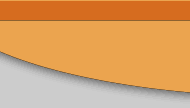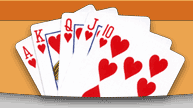Roulette Quiz Answers are in Purple. Those
who'd like more of the details, color and stories behind the stories
might
enjoy my Casino Answer Book,
which answers these questions and many more:
1. Roulette in its modern form dates back to:
B. Paris in the 1700s.
Modern roulette wheels, complete with alternate red and
black slots with numbers, have been traced to Paris in
1796.
2. The most important difference between American and European
roulette is:
C. The European wheel does not have 00.
The standard European wheel has only a 0, with no 00.
3. An American roulette wheel has:
C. 38 numbers.
The standard American wheel has numbers 1 through 36, plus
0 and 00.
4. The wheel has numbers arranged:
A. So that consecutive numbers are approximately opposite
each other.
It's not perfect, but the attempt was made to place consecutive
numbers opposite each other. Check out the numbers around 0
and 00. Zero is flanked by 2 and 28; on either side of 00 are
1 and 27.
5. English engineer Joseph Jaggers is famous for:
A. Breaking the bank at Monte Carlo.
In 1873, Joseph Jaggers found a biased wheel–a wheel on which
some numbers turned up more often than by random chance.
His $325,000 in winnings would be a tidy sum today, but they
were astronomical in 1873.
6. At the roulette table, roulette chips have a value:
C. Determined when you buy them.
One color of roulette chip can have several different values
over the course of a day. I might buy in for $10, and tell
the dealer I want 25-cent chips. After I leave, another player
might buy in for $50 and request $1 chips, and another might
buy in for $500 and want $10 chips. The dealer keeps track
with a marker placed atop a chip of the designated color.
7. At the cashier's cage, roulette chips have a value
of:
A. Zero.
Since roulette chips may have several different values over
the course of the day, they may not be redeemed at the cashier's
cage. Redeem for regular casino chips before you leave the
table.
8. The house edge at American roulette:
A. Is higher than at most table games.
The house edge on most bets at American roulette is 5.26 percent.
That's much higher than the 0.5 percent against a blackjack
basic strategy player, 2.5 percent against an average blackjack
player, 1.17 on baccarat bets on banker on 1.41 percent and
the pass line at craps.
9. Bets on the numbers themselves, whether single-number
bets, or two-, three-, four-, five- or six-number
combinations, are
called"
A. Inside bets
The numbers are inside bets. Red/black, even/odd, first 18/last
18, dozens and columns are outside bets.
10. A player betting on red/back, first 18/last
18, even/odd, dozens or columns:
C. Must bet at least the table minimum on each of those propositions.
At a $5 minimum table, if you decide to bet black and the first
column, you must bet at least $5 on black and at least $5
more on the first column. On inside bets, you may meet the
minimum by spreading bets totaling $5 on several numbers.
11. The house edge at roulette comes from:
A. The presence of zero and double-zero.
The house pays all bets according to odds that would be accurate
if there were 36 numbers on the wheel. But with 0 and 00,
there are 38 numbers. True odds of winning a single-number
bet are 37-1, but winners are paid only 35-1.
12. Placing a split bet on zero and double-zero
in addition to other wagers:
C. Makes no difference on the house edge.
The house edge applies to 0 and 00 just as it does to any other
bet on the wheel. If you place single-number bets on 2, 14,
29 and 36, each with a house edge of 5.26 percent, and add
a split bet on 0 and 00, which also has a house edge of 5.26
percent, the house edge on your total bet remains 5.26 percent.
13. The house edge on single-number
bets:
C. Is the same as on even-money
bets such as red/black or even/odd.
On an American wheel, all bets carry a house edge of 5.26 percent
except the five-number bet on 0, 00, 1, 2 and 3. On that combination,
the house edge is 7.89 percent.
14. If double-zero has come up the
last three spins in a row, the
next spin is:
C. About as likely as usual to be double-zero.
Past results do not affect future outcomes. Unless you've stumbled
on a biased wheel, double-zero has a 1 in 38 chance of hitting
on every spin, regardless of what's happened before.
15. If some numbers consistently
occur more frequently than expected
by random
chance,
this:
B. Favors the player.
If some numbers occur more often than by random chance, and
the player knows about it, the player can adjust bets accordingly.
Return to the Quiz









